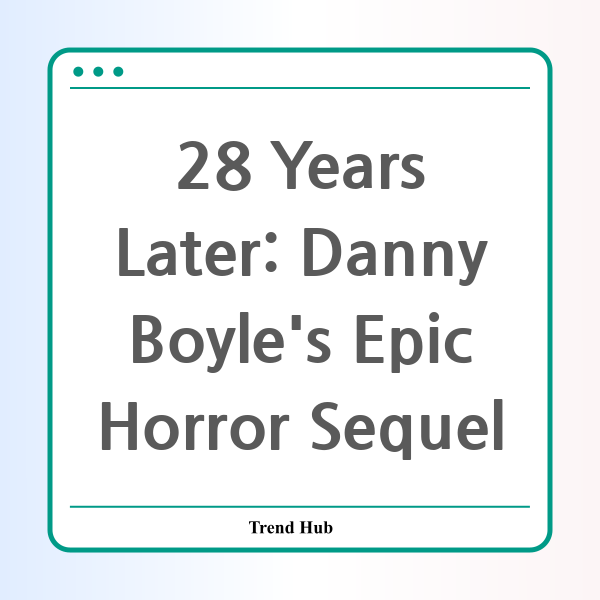* This website participates in the Amazon Affiliate Program and earns from qualifying purchases.

What happens when a beloved horror classic meets the modern filmmaking era? The answer lies in 28 Years Later, the highly anticipated sequel to Danny Boyle's iconic 28 Days Later. As we delve into the film about the Rage Virus that captivated audiences nearly a quarter of a century ago, we see how Boyle has evolved his unique storytelling approach while maintaining the gritty allure of his original work.
Set to hit theaters on June 20, 2025, 28 Years Later promises to not only continue the harrowing tale of survival but also explore the socio-political landscape of modern Britain. According to Danny Boyle, this new installment features a widescreen format that enhances the feeling of unease and vulnerability. "If you're going widescreen, the infected could be anywhere… you have to keep scanning, looking around for them, really,” he explains. This makes the viewing experience as much about suspense as it is about the horror.
One significant difference in this sequel is its thematic pivot. Instead of broadcasting chaos and infection across countries, Boyle and writer Alex Garland have chosen to narrow the focus back to a singular, isolated community. They draw inspiration from contemporary events, notably the effects of Brexit, which resonate with the film's narrative about separation and isolation. The story begins in a safe island community that is cut off from the mainland, intensifying the tension that permeates the film.
Returning fans can expect to see familiar narrative styles and visual techniques that were established in the original film. For instance, Boyle maintains his use of unconventional filming techniques. He incorporates innovative methods such as using multiple iPhones, sometimes up to 20, to capture spontaneous and visceral moments. This approach pays homage to the original's gritty, homemade aesthetic while propelling it into a new cinematic realm.
Moreover, Boyle has collaborated once again with cinematographer Anthony Dod Mantle, reintroducing a 2.76:1 widescreen aspect ratio that harkens back to the cinematic grandeur of epic films. This allows for immersive storytelling, pulling the viewer deeper into the tension and the striking visuals of a post-apocalyptic landscape.
While the action remains fervent, Boyle is careful to balance it with rich character moments. His goal is to create an experience that feels both grand and intimate. As he states, “There’s a lot of joy in keeping the audience guessing, especially experienced actors,” showcasing his commitment to bringing a fresh take to familiar narrative arcs. This will challenge audiences’ perceptions and expectations, promising surprises that will keep viewers on the edge of their seats.
In 28 Years Later, we see not only a continuation of the original storyline but also a substantial evolution in character development and thematic exploration. As Boyle and Garland re-enter the fray of the Rage Virus, they are keenly aware of the world around them and have woven current events into their narrative fabric. This film does not merely retread old ground but instead boldly ventures into new territories, reflecting the anxieties and complexities of contemporary society.
As we await the release of 28 Years Later, it’s clear that Boyle has crafted a sequel that both honors its predecessor and boldly pushes forward into new storytelling realms. Whether you prefer your infected slow and creepy or fast and furious, this sequel aims to captivate and terrify, making it a must-watch for fans of the genre. How do you prefer your undead: fast or slow? Join the discussion below!
* This website participates in the Amazon Affiliate Program and earns from qualifying purchases.